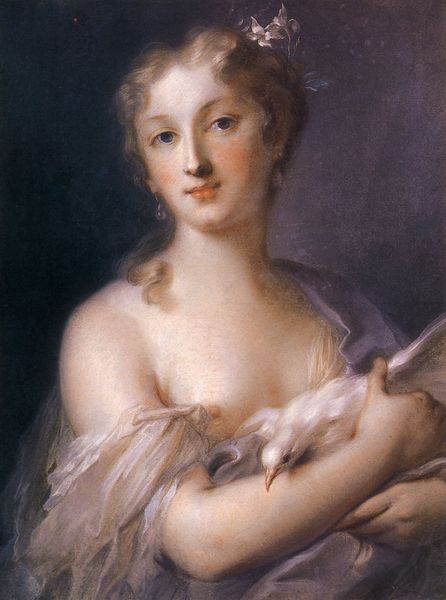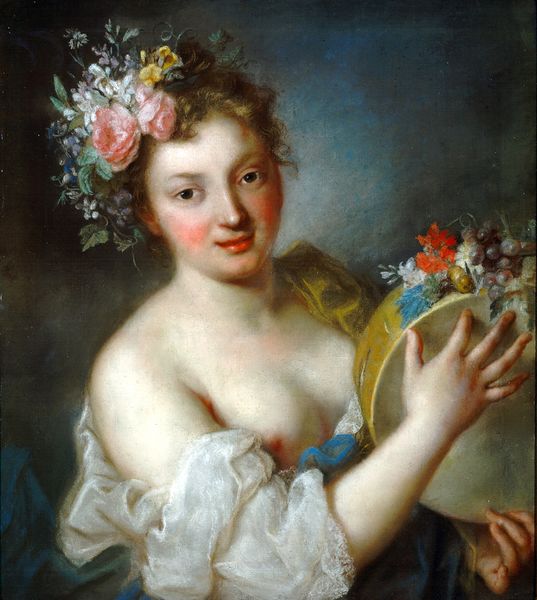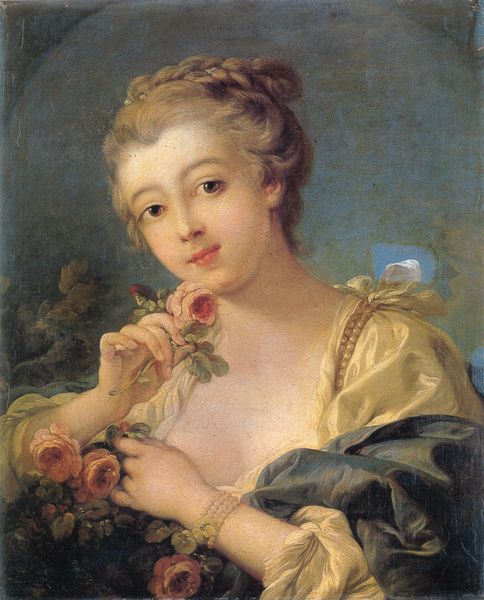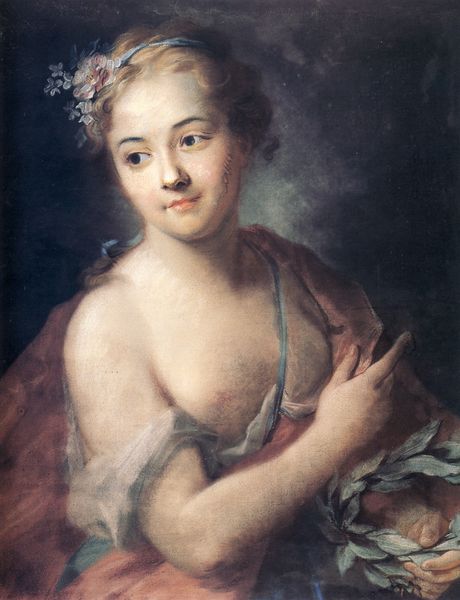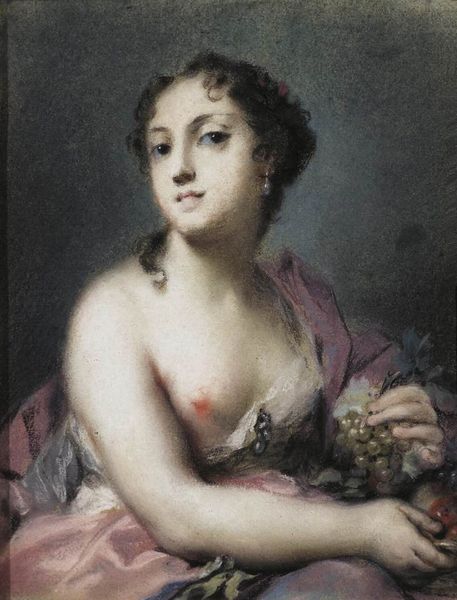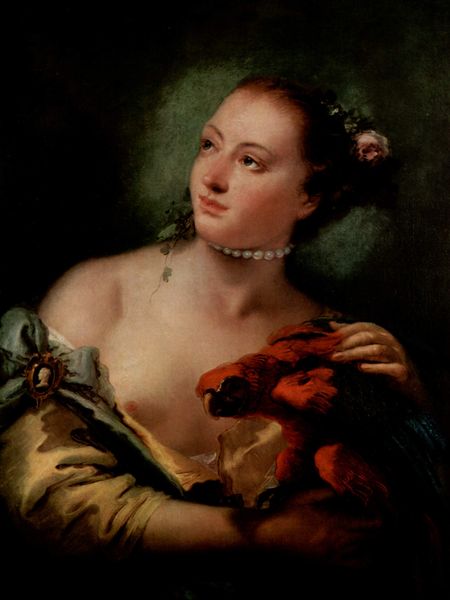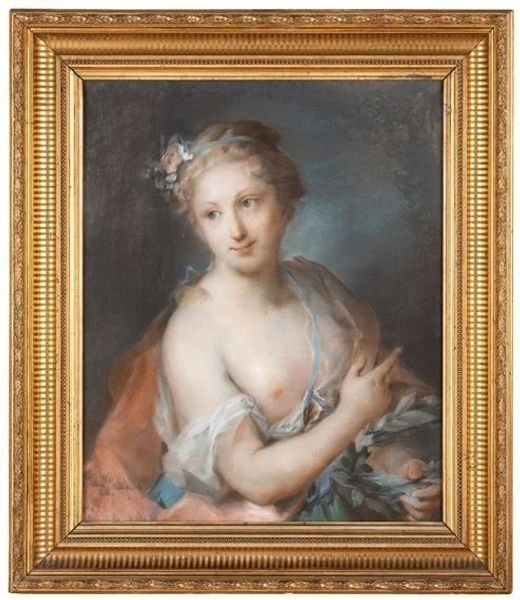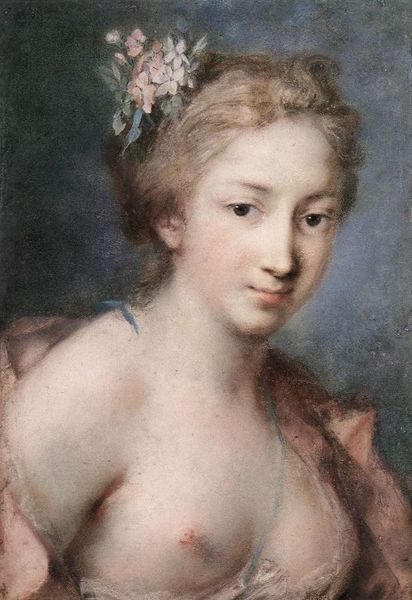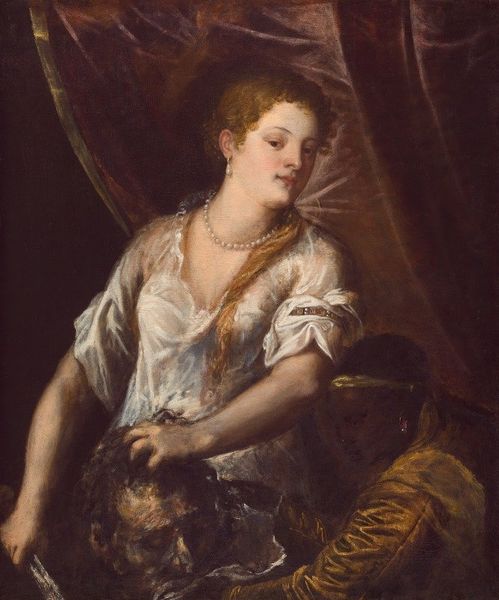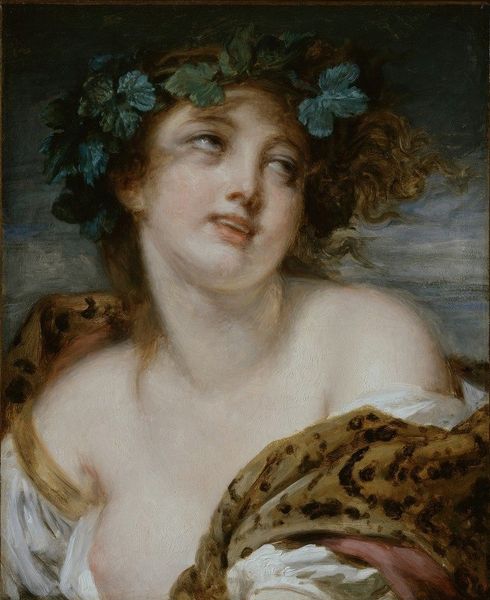
painting
#
portrait
#
allegory
#
painting
#
mythology
#
nude
#
portrait art
#
rococo
Copyright: Public domain
Editor: We're looking at "Nymph Followed by Apollo" by Maurice Quentin de La Tour. It appears to be a Rococo-style painting of a semi-nude woman holding a wreath, maybe a portrait or an allegory of some sort. I'm struck by its ethereal quality, the soft colors, and how it almost romanticizes... well, female objectification? How do you interpret this work? Curator: That's a sharp observation. Rococo, especially in portraits like these, functioned as a display of power, often masking the inherent power imbalances of the time. It's key to consider whose gaze is prioritized. This artwork presents a delicate woman, partially nude and adorned. Instead of taking her as a beautiful object, can we interrogate her power? Who dictates these aesthetic ideals, and how do they serve to reinforce social structures? Editor: So, the painting isn’t just pretty; it's an active participant in a system? Curator: Precisely. The mythological context is not neutral. How does the myth of Apollo chasing Daphne play into the narratives of consent and power we are grappling with today? This portrayal arguably softens, even glorifies, a narrative of pursuit and potential violence. Editor: That casts the image in a very different light, and complicates my appreciation. It seems it requires a viewer to consider so much more than artistic beauty. Curator: Exactly. De La Tour’s technical skill is undeniable, but analyzing the societal messages conveyed in the artwork is a crucial, perhaps more significant, aspect of our engagement. Understanding the gendered power dynamics at play then can empower us to actively critique them now. Editor: I see, understanding its historical context allows us to question and maybe even challenge these structures. Curator: Precisely. Engaging with historical artwork through a critical lens transforms them into valuable resources for reflecting on and shaping contemporary socio-political conversations.
Comments
No comments
Be the first to comment and join the conversation on the ultimate creative platform.
